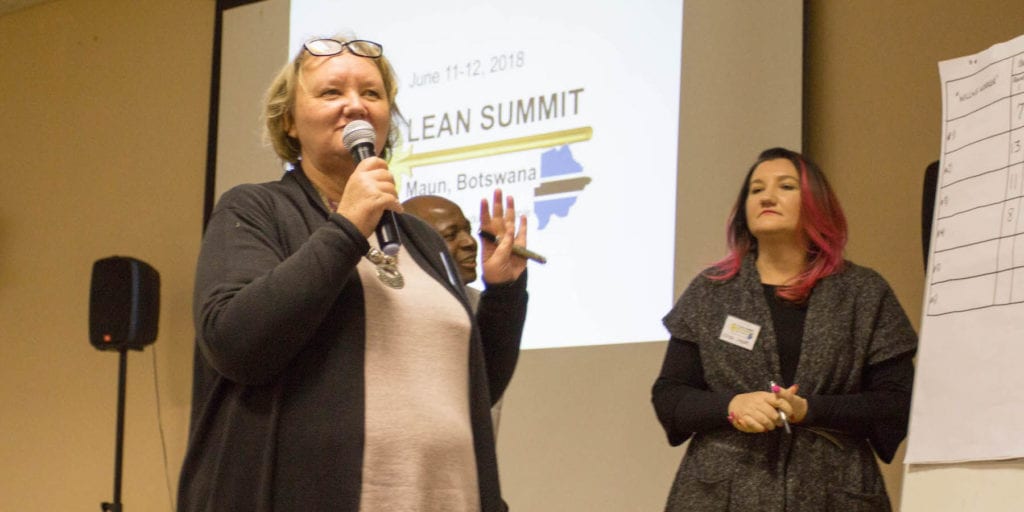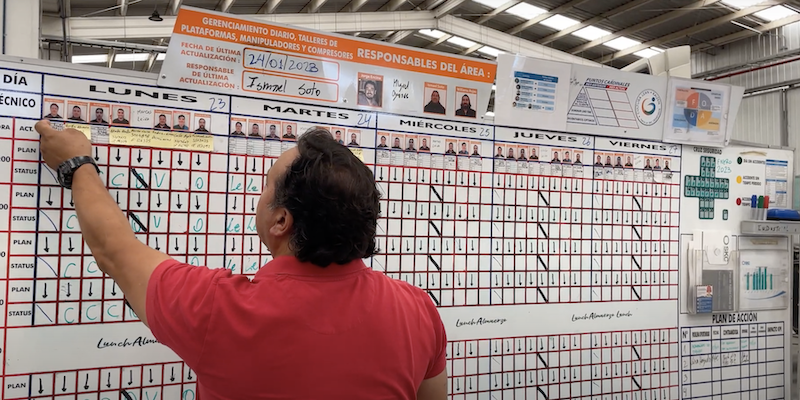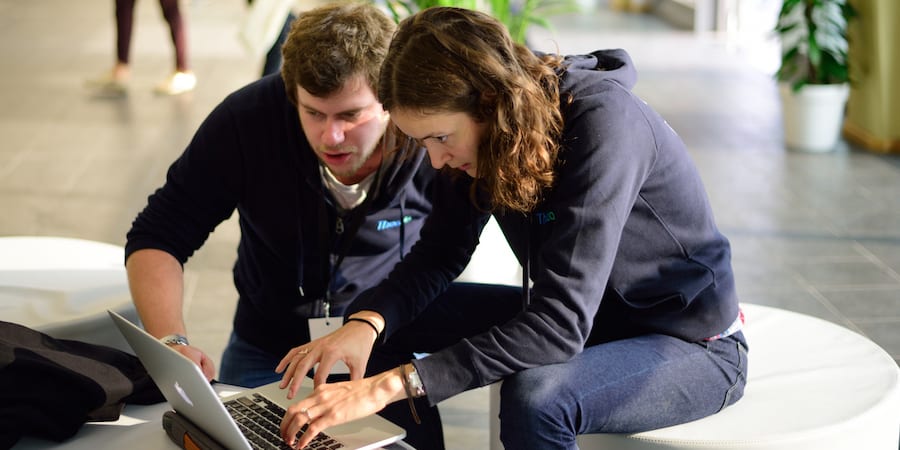
Kaizen I didn't know was there
FEATURE – As she packs before leaving Botswana, the author tells us of a wonderful example of Lean Thinking that resurfaced from her past working in the Botswana tourism industry.
Words: Sharon Visser
Banner picture credit: PixHound / shutterstock.com
I am busy packing up the home I have lived in for 38 years. It has been a challenge: however hard I have tried not to, I seem to have collected years of history in it – some of it good and some of it bad.
In the back of a storeroom, I found a heavy-duty tent zip with Velcro sewn to the back. It had been sitting there for many years and, when I thought about its history, I realized it was an example of lean problem solving from before I even knew anything about lean.

A Meru tent is the original safari tent designed in Kenya, in the “Happy Valley” days that have been made famous by the movie Out of Africa, based on a book by Karen Blixen. This 250-kilogram tent is made of heavy-duty canvas and features screened doors and windows to keep out insects and the larger, scarier inhabitants of the African Bushveld.
From Kenya, the design of this popular luxury tent travelled down to Botswana with the well-known East African safari company Ker & Downey. As luxury safari operators, this company ran safaris in Botswana from March to September to avoid the extreme heat and the summer rains that fill the marshes making the roads impassable.
At the start of the season, camps were erected all over the Okavango and then taken down for maintenance in September. They catered for a high-end market that included royalty and some of the wealthiest families in the world.
The zip of a tent is vital. If it does not work, it will make the inside of the tent accessible to unwelcome guests – like mice, mosquitoes, snakes, and a possible predator. Who would have thought such a simple little gadget had so much power? Putting a client in a tent where the zip could not close was not an option, so the issue of tent zips became a common emergency, as even heavy-duty zips are quite fragile.
To repair a tent, a sewing lady with an industrial sewing machine traditionally had to travel to the camp in a 4x4 vehicle. Some of the roads are so bad that it often took eight hours to travel 90 kilometers. Once the machine and the sewing lady were in place, the actual repair involved emptying the tent and dismantling it to remove the old zip to then fit a new zip. It took five to six people to help the sewing lady to hold and maneuver the heavy canvas through the machine. It was a task that took a full day.
It was around this time that Velcro became all the rage, and the tents were adapted so that it could be placed on the window flaps to replace zips. Due to the high usage of the front zip on a tent, however, it was decided that the Velcro would wear out too quickly to use it in that space.
My husband Hennie, who worked for Ker & Downey as a field manager, became frustrated with the problem and ran a little experiment, asking the tent maker to sew the one side of the Velcro onto the tent and the other side onto a zip. The tent was erected with this new modification and used for a season. Whenever the zip was damaged, another complete velcro zip was pressed into place, which took approximately 10 minutes. Of course, this was a huge saving in time and energy, cutting down on eight hours of work, five employees and all the travel. What a great example of PDCA at work, done by the people who do the work!
At Ker & Downey’s request, the South Africa-based manufacturer started to build all their Meru tents with the new zip design, making it a popular option.
I now realize that, in many ways, Ker & Downey was a lean company, which had engaged in many other kaizen activities that represented an important part of their problem-solving culture. An example was using shade netting for ground sheets in front of the tents, instead of canvas that needed to be swept all the time. With shade nets, sand drops through the holes, keeping the area looking tidy, and doesn’t get into the tent, keeping it clean.
Another example of the company’s leanness is their replenishment system. At the camps, all food and beverage supplies were packed in the kitchen tent storage, using metal cupboards that were effective at keeping mice and other nocturnal visitors out. The cupboards were numbered and packed according to a pre-printed master stock list. Every ordering day just a quick stock take was carried out and current stocks written onto the list. The supplies office at base then used a master list and topped up the stock to the correct value. I now know this as Just-in-Time, sell one – buy one.
The erection of camps worked on pull, putting up only as many tents as were needed for a safari, when they were needed. They added and subtracted them as needed, thus freeing up cash flow.
There was also a lot of very lean communication going on. In those days, the only way of communicating we had was long-distance radio. These devices are often crackly and make it quite difficult to hear, which meant that one often had to spell out words using NATO phonetic alphabet. Even simple words like coffee could take quite some time to spell out: Charlie-Oscar-Foxtrot-Foxtrot-Echo- Echo, over.
The stock lists were, therefore, uniform. They all used the same sequence and format. Each line that was numbered contained boxes with the description of the item with a box underneath it to fill in quantity – a far cry from having to say things like “5 coffee-2 milo-7 sugar”, following the random order of an ordinary shopping list. This became a very simple communication – line 1 -5-2-7-8-3-1-3-2-6 – saving time and providing a more accurate outcome.

As I dug deeper into the storeroom, I also found an operations manual that contained standard work so detailed that it included a diagram showing the placement of all items in the tent and bathrooms. It even had sequences for cleaning and cleaning checklists.
I am not sure how Ker & Downey came to know about these basic lean processes and thinking, but I do know that the examples of kaizen I described earlier were carried out by the people doing the work, as and when they identified the problems to solve. These hands-on workers seemed to unwittingly carry out the PDCA cycle. Is it possible that, for the people doing the work, PDCA is a natural part of the process?
I then wondered if it is only people that are external to the work that struggle to follow the PDCA cycle, because they don’t do the work. From now on, when coaching, this is something I am going to pay attention to.
I also wondered how Lean Thinking came to a remote part of Africa in the late 1980s, and what helped it to live. Reading the operations manual I came to realize that value to the customer was repeatedly mentioned. Maybe it was the clarity with which customer value was described, combined with the constraints provided by our resource-scarce environment and just the right amount of freedom to solve problems that promoted this virtuous circle of improvement.
Or was it that the owners at that time, the Freidkin family of Gulf States Toyota in Houston had somehow bought the gentle wind of Yokoten with them on their visits, by asking the right questions and requiring clear standards?
I will never really know for sure, but it’s probably a combination of both. People often tell me that I am a natural lean person, that I just think that way. Now I wonder if if I have not caught that Yokoten wind myself – and made it part of my thought process – while spending vast amounts of time in these camps as a young adult.
THE AUTHOR

Read more


VIDEO INTERVIEW - Planet Lean speaks with Jeff Sutherland, one of the inventors of scrum software development, about the evolution of this Agile framework and its relationship with lean.


FEATURE – The author explores how SKC embraced Lean Thinking as a cultural shift – one that empowers people, transforms leadership, and shows how true sustainability starts with human growth.


FEATURE – The problems agricultural businesses encounter every day can be solved using simple concepts of lean maintenance, resulting in considerable gains.


INTERVIEW – Software development company Theodo is a unique example of a digital company that has fully embraced lean and understood its potential. We caught up with their young CEO and CTO.

